Soaking lean meats in a salt water solution is so easy and it makes such a difference! Here’s how to brine.
You’ve probably heard of brining, and maybe you’ve even done it with your Thanksgiving turkey. But brining is a great idea for all your favorite lean meats, like chicken breasts and pork chops. Why? Because it helps make them both juicier and more flavorful!
Let’s take a closer look at this simple kitchen trick.
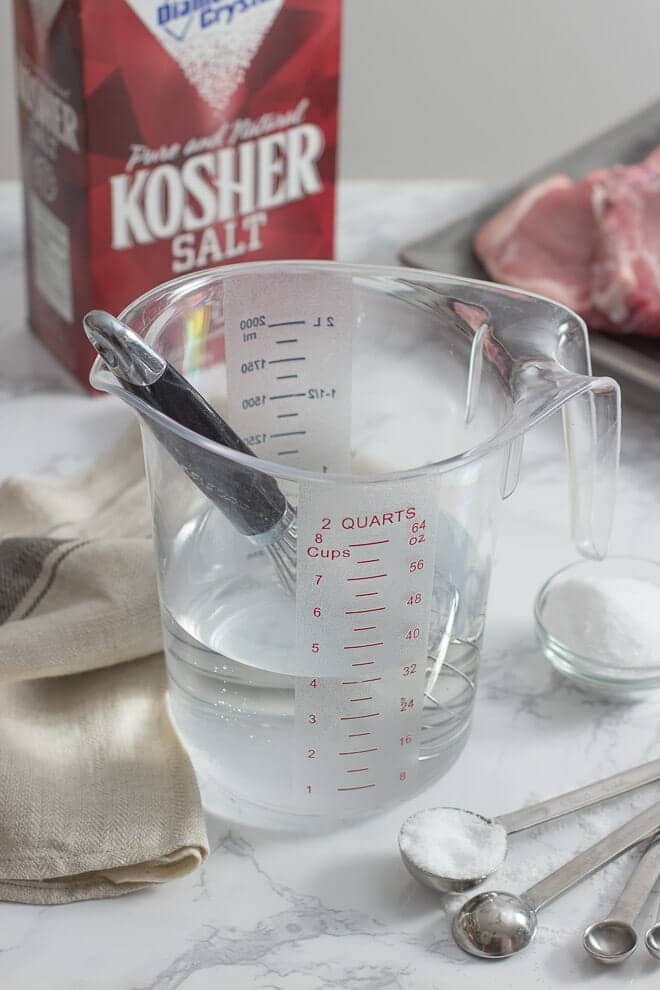
What Is Brining?
It’s simply soaking food in a salt water solution. Sometimes for extra flavor, you might add other ingredients, like sugar, herbs, or spices. But all you really need for a brine is salt and water. (Of course, you could also dry brine – read about that method here. Dry brining is actually a bit simpler than traditional wet brining, and is much more convenient for large pieces. I wholeheartedly recommend that you try dry-brining a turkey, for instance. Here’s how.)
How Does Brining Work?
One, the meats that you’re soaking absorb the brine, making them more moist and juicy. All meat loses liquid during cooking, but since brined meats start out with more, they end up with more, too.
And two, brining dissolves some of the meat’s muscle fibers. The technical term for this is denaturing. But don’t worry about that. The important thing is it literally turns some of the solids into liquid, enhancing your experience of moisture.
The additional moisture makes your meat juicier. The fact that the moisture is salty makes it more flavorful. Win and win!
What Meats Should You Brine?
Because the benefits are juiciness and flavor, the best meats for brining are lean meats, because with less fat they tend to dry out and also to have less flavor. Enter brining the Thanksgiving turkey.
But also – you can brine pork chops, pork loin, and pork tenderloin. Chicken breasts (learn the best way to brine them here) or whole chickens, and even brined chicken thighs for the best flavor. And some people even brine shrimp, including me!
On the flip side, beef and lamb are not good candidates for brining because they’re fattier and they can be enjoyed rarer than chicken or pork. Both those things mean they cook up juicier and more flavorful by default.
How To Brine
See my recipe below for a basic brine solution. It’ll make enough for 4 pork chops, 4 chicken breasts or 2 pork tenderloins. If you’re making something bigger, just double, triple, or quadruple the recipe! The recipe also tells you how long to brine the different cuts.
Note that the amount of salt in the recipe depends on what kind you’re using—Diamond Crystal kosher salt, Morton’s kosher salt versus any kind of finely ground salt like table salt. Personally, I like kosher salt because it dissolves easily, but any kind will work.
As for additional ingredients, I’ve found that sugar can make a nice difference, but adding herbs and spices makes a very mild difference at best, except if you go through some extra steps to add that flavor. A lot of turkey brines, for instance, will have you boil the water with aromatics before adding the salt. That infuses the water with flavor. However, I have found a much easier and more potent way to add flavor to a brine. For my Best Turkey Brine Recipe, I discovered that putting cold water and salt in a food processor with raw garlic, onion, and fresh herbs creates a flavorful slurry that really adds flavor to the poultry.
Can You Freeze Brined Meats And Poultry?
Yes! You can brine your meats and then freeze to be cooked at a later time. Brine the meat for the recommended time, drain the excess brine, and store in the freezer. The brine gets suspended in the meat as frozen water droplets.
I suggest using the meat within six months, after that there is a chance that the ice crystals will affect the texture of the meat, especially thinner cuts. The meat could also start to take on odors from the freezer.
Podcast Episode: Brining Meats
Listen to learn how to make this recipe, along with some great tips from Christine:
Listen to more Recipe of the Day episodes here.
Print
How to Brine Recipe
- Prep Time: 4-24 hours
- Cook Time: 0 minutes
- Total Time: 0 hours
- Category: Entrée
- Method: Brine
- Cuisine: American
DESCRIPTION
Soaking lean meats in a salt water solution is so easy and it makes such a difference! Here’s how to brine.
Ingredients
- 4 cups cold water
- Salt (6 Tbsp. Diamond Crystal kosher salt OR 4 and 1/2 Tbsp. Morton’s kosher salt OR 3 Tbsp. table salt)
- 2 Tbsp. brown or white sugar (optional)
- Lean meat for brining
- Optional ingredients: peppercorns, juniper berries, rosemary, thyme and/or sage sprigs, bay leaves, allspice berries, whole cloves, star anise, other favorite herbs and spices
Instructions
- In a large nonreactive container, combine the water, salt and sugar (if using), stirring to dissolve the salt and sugar.
- Transfer to a resealable bag, add the meat and any optional ingredients and seal the bag, squeezing out as much air as possible.
- Set aside in the refrigerator for 1-2 hours for: chicken breasts, 1-inch thick pork chops, and pork tenderloins; for 4-6 hours for a whole chicken or a turkey breast; 6-8 hours for a pork loin; 12-24 hours for a whole turkey.
- Remove the meat from the brine, pat it dry, and proceed with your recipe.
Notes
Note: This recipe makes enough brine for 4 pork chops, 4 chicken breasts or 2 pork tenderloins. Double, triple, or quadruple the recipe for bigger cuts or larger batches.
This post originally appeared in May 2018 and was revised and republished in October 2021.


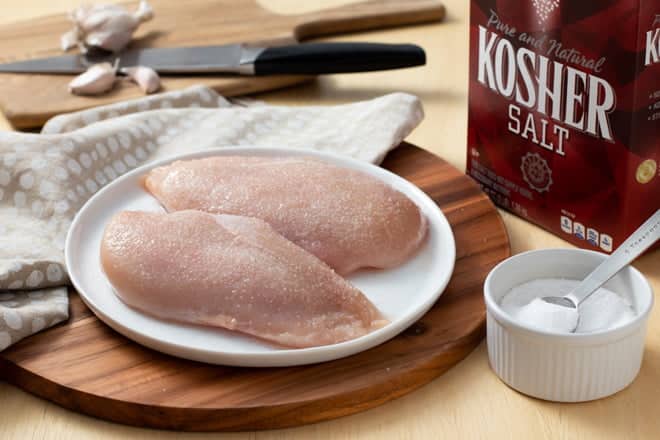
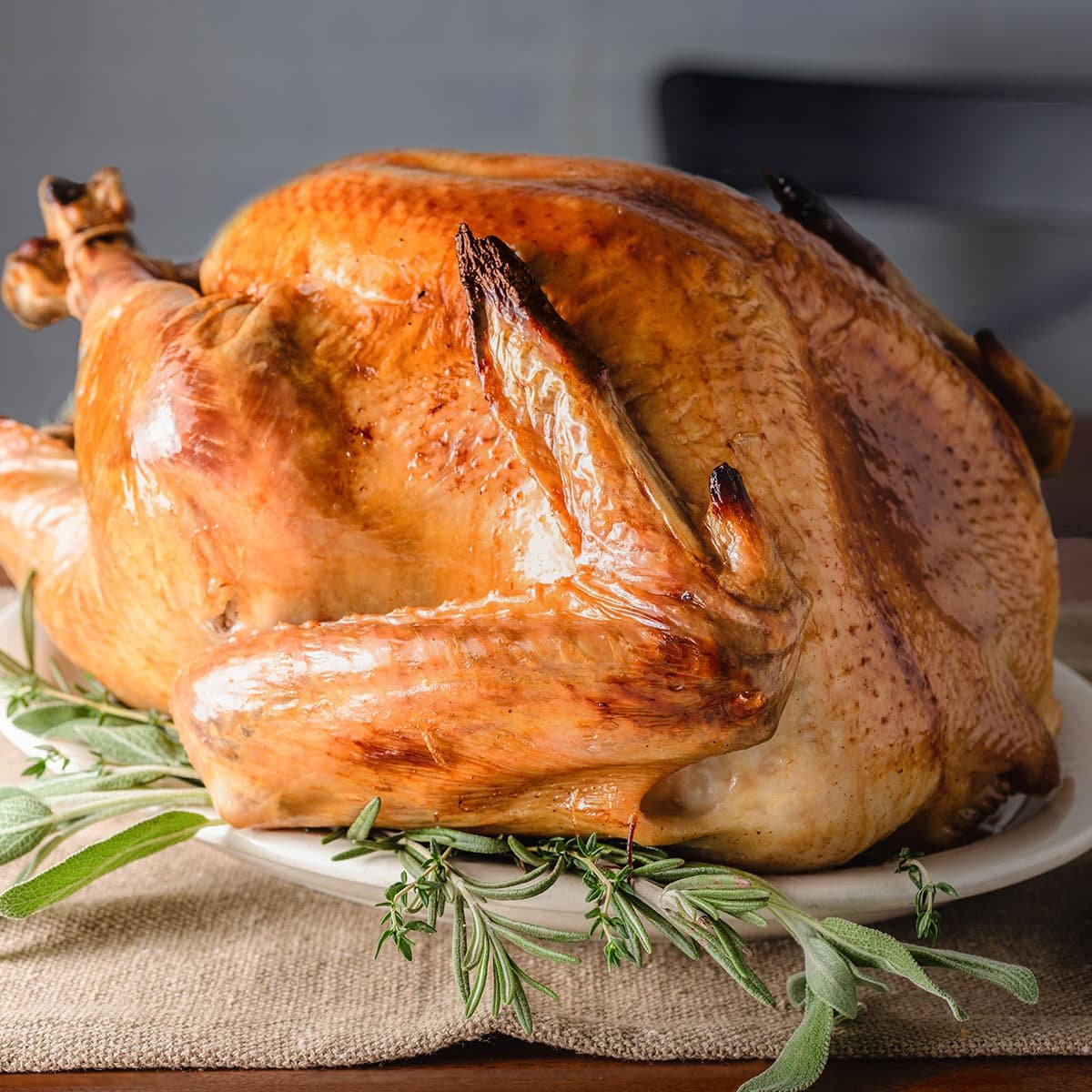
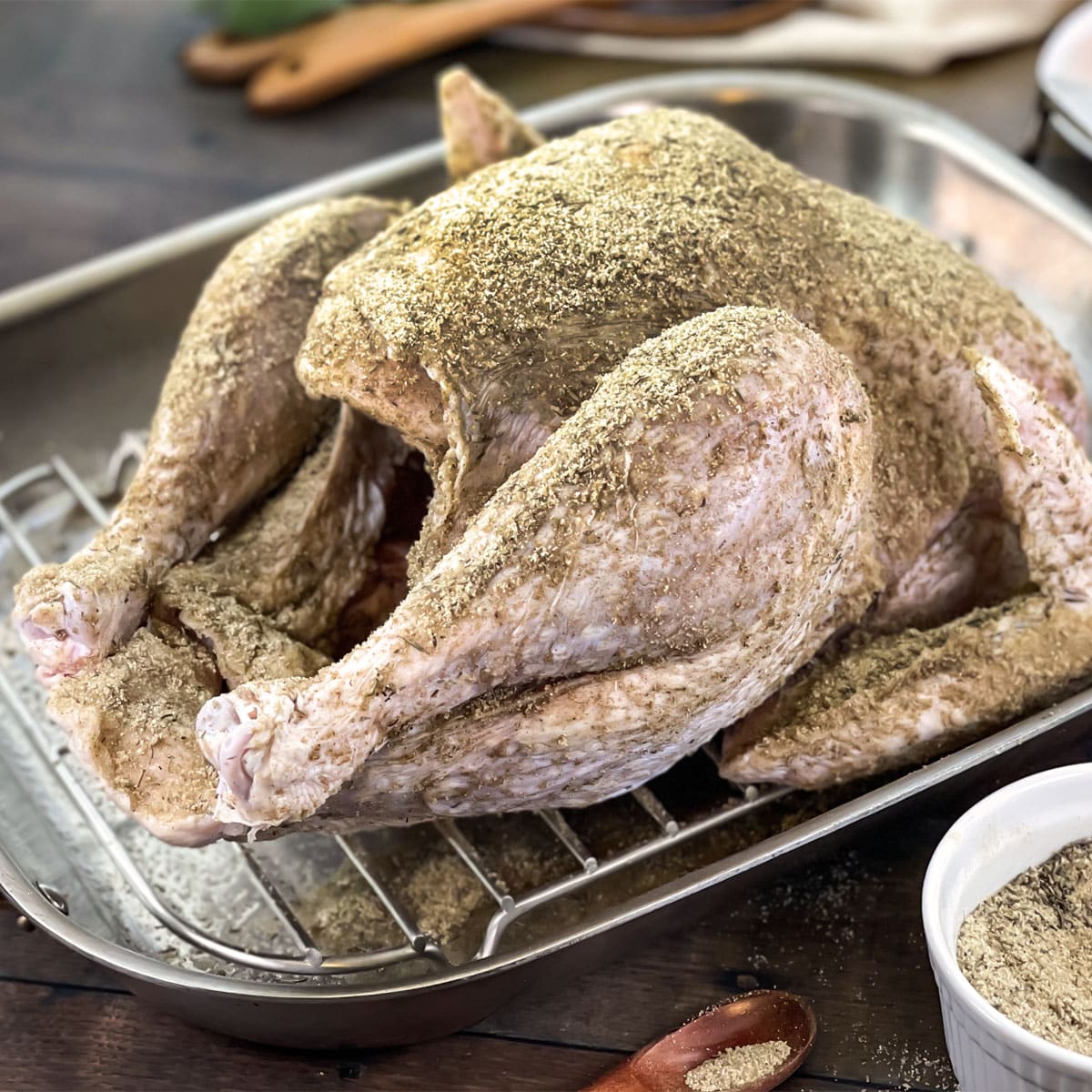
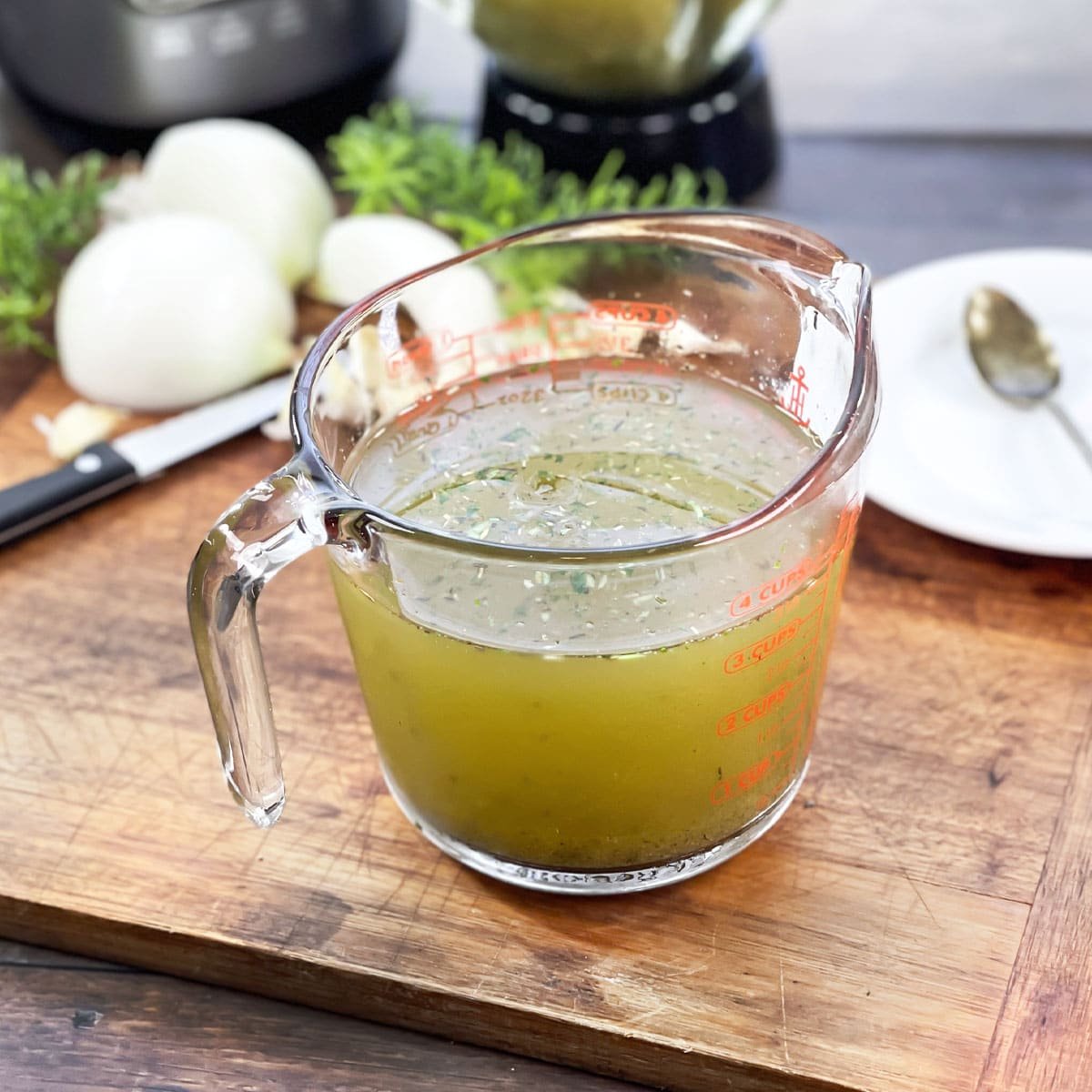



















Thank you for this! I’ve looked through all my old recipe books and could not find the salt to water ratio. I have many.
I would like to add, though, that ALL mined salt is Kosher. Salt labeled “Kosher” is merely about the SIZE of the ground. It’s large and, when sprinkled on top of raw cuts of meat, it draws the blood out of them. For brining, it’s OK to use regular table salt. If you are Kosher observant, use MINED table salt. Even better to use is MINED salt that is labeled, “Canning and Pickling Salt” because the very fine ground of it dissolves quickly and thoroughly and what you want with brining is for the salt to be totally dissolved in the water.
Hi Christine! I noticed in your reply comment to someone named DIAR that you said with chicken breast you brine 4-6 hours. Isn’t this a typo? I think it contradicts your other comments and recipe. I could be reading it wrong tho.
Thanks for your question, Dana. That reply was from years ago, and I’ve done more extensive testing since then. I now recommend 1-2 hours for brining chicken breasts.
Is the measurement given for Morton salt acceptable for COURSE kosher salt ?
Alice, different kinds of kosher salt have differently-sized crystals. You can try weighing the salt to figure it out. Morton’s will be about 15 grams per tablespoon.
Do I cut and or pound chicken breast to size BEFORE brining
Yes, you can cut the chicken breast before brining. If you’re pounding them thin or cutting them into small pieces, you won’t need to brine them as long, maybe 30-40 minutes depending on what you’re ending up with. There’s lots of good info specific to brining chicken breasts in this post – https://cookthestory.com/how-long-to-brine-chicken-breast/ – including in the comments! Hope that helps, Sonya!
I brine pork tenderloins and often they come out a little more salty than I would like, so I will try your ratio. I use apple cider with pickling spice, a little cider vinegar and a tiny bit of liquid smoke that I simmer about 5 minutes. Maybe I’m brining too long— 4 hours? Any ideas?
John, yes, I think it’s possible that you’re brining them too long. I actually did a full round of testing on brining pork tenderloins using different amounts and techniques with a group of us doing side-by-side blind taste-testing. One hour in the brine was actually our favorite. As to the cider, pickling spice, vinegar, and liquid smoke, that all sounds great! If ever you’re up for some fun one day, give something like my turkey brine a try on your pork tenderloin https://cookthestory.com/the-best-turkey-brine-recipe/ It’s a flavor monster where you blend up raw ingredients like onion, garlic, and herbs in the blender with the salt and water. It really penetrates the meat and is really incredible. I’ve used it on pork loin, tenderloin, chicken breasts, whole chicken, and whole turkey with great results. I’ve also played with the ingredients in a variety of ways. For instance, I was using chicken breasts in a stir fry, so for that food-proceessor-brine I did onion, garlic, cilantro, mint, fresh ginger, sesame seeds, sesame oil, and the salt and water. It was really delicious!
My understanding is that the salt must be desolved in hot water or the water doesn’t absorb the salt, and is therefore not a brine.
I personally wouldn’t use this method. . . .
Sally, That is actually incorrect. There is not a definition of brine that requires hot water. And a brine made with hot water is no more or less effective than one made with cold water. Here is the actual science about salt and water though, so you can understand what’s going on a bit better.
At room temperature, 100 grams of water can dissolve 35 grams of salt https://sciencing.com/much-water-needed-dissolve-salt-8755948.html There is about 17 grams of salt in a tablespoon and 240 grams of water in a cup. Our recipe is for about 1 tablespoon per cup. That means that we are dissolving 17 grams of salt in 240 grams of water, which is very easy to do. You just stir it and it dissolves. If you try it, you’ll see. Note that if your water is boiling, you can then dissolve 40 grams of salt into 100 grams of water (so 5 grams more, which is equivalent to less than a third of a tablespoon of salt). It’s not that big of a difference, and it definitely doesn’t affect this recipe since we’re using less than half that amount of salt per cup.
The reason some people heat the water first is because it is easier to dissolve the salt in hot water, a bit easier anyhow. But given the time needed to heat the water and then the ice used to cool it down (or time to cool it down), that isn’t a good reason. It only takes like 30 seconds of stirring for the salt to dissolve at room temperature. Another reason people heat the water is if they are trying to add extra flavor to their brine (like by using herbs, citrus, and other aromatics). Then you typically need the hot water to get the flavor extracted into the water. Having said that, my turkey brine recipe uses cold water and a blender to get a lot more flavor into the brine than can be achieved with a hot water simmer and the result is the best turkeys I’ve ever cooked. Here’s that recipe in case you’re interested https://cookthestory.com/the-best-turkey-brine-recipe/ Happy Brining!
Christine,
Do you recommend a Jaccard blade tenderizer on pork chops or chicken breast prior to brining?
I’ve actually never tried one before. It probably makes the brine penetrate and have effect more quickly. If you try it, please come back and let me know how it turned out!
Hi, Christine. I thought that 60 min was enough time to brine chicken – that’s what I read in your BBQ article. I already put the chicken into the salt/sugar/water solution and will not be home to do anything more than 60 min. Is that enough time to brine?
For chicken breasts? Yes, an hour is a good sweet spot for brining average size chicken breasts, Jackie. Enjoy!
Thank you for the very informative video. I will be sharing it with a friend of mine. I’m going to teach her how to French a 7 lb standing rib roast and Brine it .She’s so worried on how to cook it where it’s not too done.This will just be right upper alley with the information in the video thank you very much .Chef Steven C. Ebert
So happy to hear that, Chef Steven! I hope it all goes well!
I was afraid brining would make my turkey too salty. I did exactly what you said and brined it for 12 hours. Itw as the best turkey I ever made! I’m going to try it on a pork loin for Christmas. You have times for a pork tenderloin. Would it be the same for that?
Cheryl, Yay! So happy you liked it! And no, a pork loin would need longer than a pork tenderloin because it’s thicker and the brine will need longer to penetrate. I’d go with 6-8 hours. I’ve added that to the instructions above as well in case others have the same question. Thank you!
Thank youi brine all poultry and pork now there’s just no better way for juicer meats
Erich, I agree! When I have time, I always brine chicken breasts and leaner pork cuts. It makes a huge difference. I usually do a dry-brine like this for beef: https://cookthestory.com/how-to-dry-brine/ Have you tried that before?
Can I brine a pork shoulder roast and then freeze it to be slow-cooked at a later date?
Barbara, actually a pork shoulder roast doesn’t benefit that much from brining. It is already a very juicy and tender cut of meat when cooked low and slow, like this – https://cookthestory.com/how-to-roast-pork-perfectly/ I therefore would just freeze it without brining it. If you do decide to brine and freeze, use within six months or the ice crystals that form can start to affect the texture of the meat. Hope that helps!
This is unbelievably salty! It would work way better by using 4 quarts of water rather than 4 cups. I almost think that that’s what you meant. I took particular care do use the right kind of salt as I agree, a tablespoon of one kind of salt doesn’t equal a tablespoon of another type. By changing the cups to quarts, it was perfect!
Greg, This is actually the standard salt brine ratio, 1 tablespoon of kosher salt per cup of water or 3/4 tablespoon of table salt per cup of water. Since there are 4 cups in a quart, that is 4 tablespoons of kosher salt in a quart of water or 3 tablespoons of fine salt per quart of water.
You will find this same ratio in many reliable sources, such as TheKitchn and Taste of Home. See here https://www.thekitchn.com/use-a-quick-brine-to-make-any-cut-more-tender-47879
https://www.tasteofhome.com/article/this-is-everything-you-need-to-know-about-brine/
The brine is meant to be very salty, but you are not meant to actually consume the brine. Instead, you put your meat into it for the specified amount of time. The salt helps the liquid to absorb into the meat, making the meat juicier. It also seasons inside of the meat, which is really great for flavor.
The meat can end up tasting overly salty if left in the brine for too long. I have found that some people are more sensitive to this than others. If you found that your meat was too salty, I’d recommend that you reduce the amount of time that your meat was in the brine and try that.
I hope this helps! -Christine